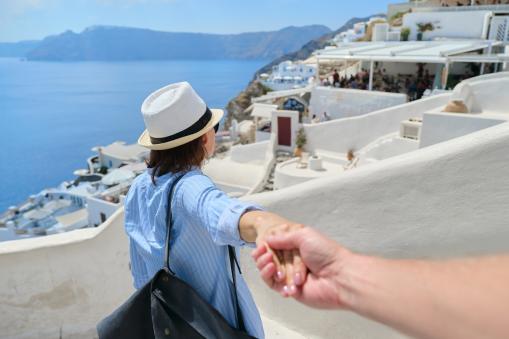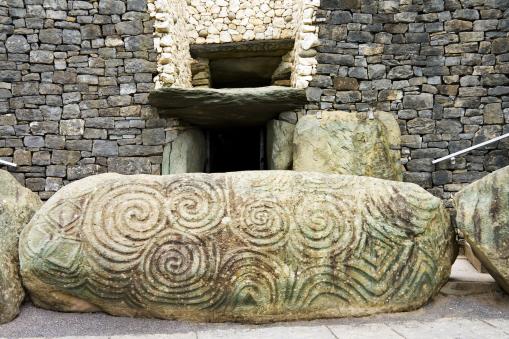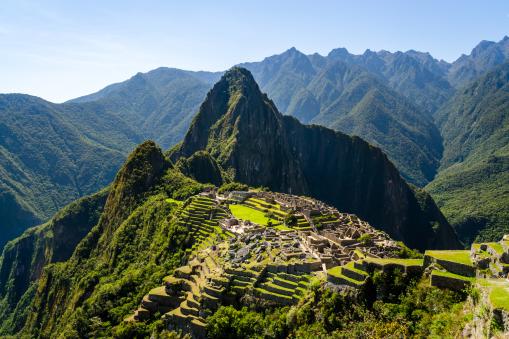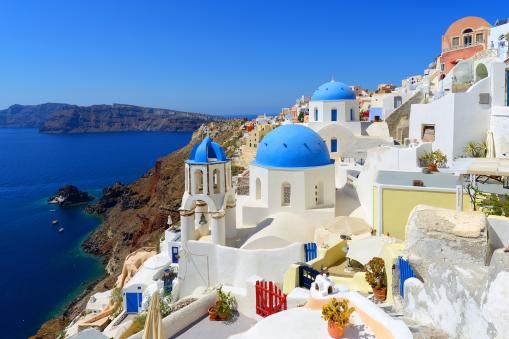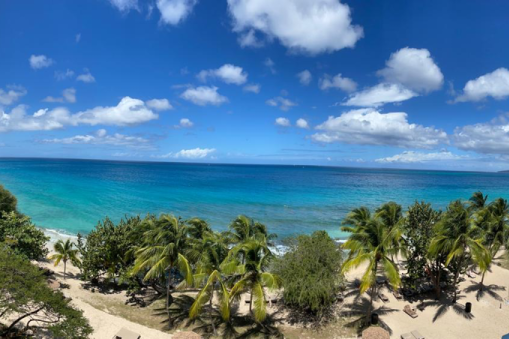Become a part of your journey
You are here
Further Afield's Journal
The Travel Nook
GREECE AND THE ISLANDS
When one hears of Greece and the hundreds of islands that surround the mainland, the mind immediately is fixated on the history that this nation has gone through.
Towns and cities such as Athens, Sparta, Delphi, Nafplion and many more have an abundance of art, architecture and beauty to offer the visitor. From Ancient civilization to the present day, it's all here. Their history of demoncracy was a guiding light to the future worldwide.
If you and your loved one are planning a vacation or a trip abroad, the beautiful islands of Mykonos and Santorini will be the heaven you’re looking for. The waters of the Aegean Sea colliding with the Mediterranean and the Ionian Sea gives that enchanting, creative, intuitive and imaginative feeling that all cares and worries are swallowed by the waves as they crash together.
Athens:
Come to Athens, home to Plato, Socrates, Euripides, birthplace of Homer, the Greek poet credited for the epics The Iliad and The Odyssey. Apollo and Cleopatra in love, prior to her suicide he tells her: “I have always loved you” to which she replied: “And I have always known”
The capital city and one of the oldest cities in the world, 3,400 years of history. Visit the Acropolis, Parthenon, ancient temples, witness the genius of the spectacular architecture. It was at Athens that the 1st Olympic Games were held.
Kalabaka:
Probably the greatest monument in the world. Rocks suspended in mid-air yet supporting the most precipitously built complexes of Meteora’s Eastern Orthodox Monasteries, 200 meters above sea level.
The town is laid out in a unique number of squares decked with fountains, trees, shrubs and flowers. At the base of the rocks is the Holy Church of the Assumption of the Virgin. Other such structures date back to the Byzantine period.
Delphi:
On the Gulf of Corinth, seat of the most famous Greek Temple and Oracle of Apollo. Zeus the Greek God of Sky and Thunder and father of all the Gods. Depicted by a lightning bolt and an eagle. It’s reputed that Zeus had two eagles released from East and West to see where they might fly to. Landing on Mount Olympus, Zeus declared that this is the centre of the world. Apollo is Zeus’s favourite son. He is the God of Sun, Light, Music, Poetry, Agriculture, Healing and Beauty.
As a symbol of devotion to the Gods, statues are to be seen in towns and cities.
Mykonos:
One of the many Cyclades islands with wonderful sandy beaches, whitewashed houses, churches and chapels aplenty and a plethora of 16th century windmills. Gale force winds blowing between the islands were of great importance to drive those windmills for farmers to grind barley, wheat and oats. With the advent of modernity these windmills are no longer used but they do add to the beauty of the area.
By day this island has a very cosmopolitan landscape, manicured styled streets with lavish restaurants, wonderful shops and stores, offering an array of jewellery, clothing and accessories. At night, however, the city dresses up as if by magic to welcome the visitors to the transformation that entertains the party goers, bars and nightclubs, dusk till dawn.
Santorini:
One of the most famous islands in the world. Volcanic eruptions have left their mark here. Where can you watch an underwater crater reflecting the town with houses clinging to the cliffs overhead with the lava having formed the beaches.
The island is in the Aegean Sea. Voted the most romantic island in the world. “The sunsets leaves me breathless” said one octogenarian when asked why she had voted as she had, “and believe you me that’s saying something, I’ve seen too many.”
The Greek philosopher Plato had a theory that the lost island of Atlantis lies off these islands. Plato believed that the Gods vexed the Elements of Nature and a massive volcanic eruption sank the island to the bottom of the sea in one gigantic movement overnight. The Santorini volcano has been dated back to 1,500 BC.
‘Being a remnant of The Atlantean culture,
The Antediluvian Kings colonized the world,
All the Gods who played in the mythological dramas,
In all legends from all lands were from far Atlantis’.
Halloween & Other Celtic Festivals
In Celtic and Irish mythology there are eight sacred days that take place at different intervals throughout the year. According to Celtic traditions, each year was quartered based on the seasons. The year was further quartered based on the solstices and the equinoxes.
The Celtic Pagan Gods worshipped the Sun, Water, Fire, Spirit, Air and Earth.
The four seasons Imbolc, Bealtane, Lughnasadh, and Samhain mark the season changes. The four remaining quarters are two equinoxes and two solstices.
Imbolc: St. Brigid’s Day, this quarter day marks the beginning of spring, February 1st. Translates to “in milk” or “in the belly”, a reference to cows that have started lactating after giving birth. Imbolc is a fertility festival with reverence for light, referencing the impregnating of Brigid, Goddess of health and fertility, by the seed of the rising Sun.
Bealtane: May Day. Beginning of Summer. Marking the season of light, during which the days are longer than nights and hopes of bountiful crops and harvests. Another of the fire festivals where people sang and danced around fires believing these to ward off the fairies that were now visiting from the underworld in an attempt to capture a Changeling to take with them to strengthen their fairy stock. Irish mothers were very protective at this time of the year. Uisneach in the centre of Ireland is the most significant of these Celtic festivals.
Lughnasadh: The Harvest season, Autumn. Lugh the God of Skills, can be the ruination or the saviour of a harvest. Watch out how your devotion to the elements behave during the growing season. Lugh is watching and listening. Too much rain or sun, the balance has to be correct. This fire festival is in hope for a bountiful harvest.
Singing, storytelling, dancers jumping through the flames, couples with their hands intertwined dance while a spiritual leader fastens their hands together with a crios or traditional woven belt, a practice from which the phrase “tying the knot” is derived. Matchmaking going on, introducing the eligible of both sexes together.
The last weekend in July is known as Reek or Pilgrimage Sunday, where thousands gather to climb Croagh Patrick in Co. Mayo in honour of Ireland’s patron saint who fasted for 40 days. This is also part of the Lughnasadh festival.
Halloween or Samhain. Now we have the dark days of Winter. Days are shorter, nights are longer and weather is getting colder. This is the most significant of all the Fire festivals. October 31st is Halloween, the eve of All Saints’ Day in the Catholic calendar November 1st and November 2nd is the feast of All Souls.
This is the time of year when the veil between the world as we know it and the other world is at its thinnest, allowing the fairy folks and the souls of the dead to walk freely and with ease among the living. Souls are restless, having died unexpectedly, no goodbyes and no preparations. Now they visit their loved ones for that brief moment.
Halloween has been celebrated in Ireland for the past 2,000 years. The living dressed up in rags and costumes so that the spirits could not differentiate between each other.
With the mass migration of the mid 1800 hundreds the festival is now a worldwide phenomenon.
These are the seasons as we know them but there are also the other sacred days of the Celtic calendar. The Summer Solstice, Litha, the 21st of June marking the longest day of the year. Druids, the pagan Gods of yesteryear, a powerhouse of wickedness and witchcraft, the demons of Christianity. Fires were lit to protect homes and communities.
Going back to early Christianity Midsummer’s Eve was known as St John’s night, remembering the feast of John the Baptist on the 24th June.
The Winter Solstice, Yule, the longest and darkest night of the year. At New Grange in Co. Meath crowds would gather as the sun continued to set and sink lower into the earth. Fires were lit, processions continued around the mound, which has been carbon dated to 5,000 plus years.
The Megalithic tomb is aligned with the Winter Solstice. The sun rising on the mornings of the 19th to the 23rd of December light up the entrance to the inner chamber casting a shaft of light 30 feet inwards, then after 15 minutes it retracts leaving the chamber as it was, in total darkness. What had happened here? My belief is that the higher echelons within this society that had died during the past year had their remains placed within this monument, whether cremated or their bones, their souls had now travelled along this shaft of light to join with the souls of their ancestors.
The Equinoxes, March 20th and June 21st are the dates of equal day and night. The successful progression of the year rely heavily on the sacred rituals observed on these days. A time to sow and a time to reap. When planting the seeds depends on how one’s harvest will be.
Where did these Celts come from? In ancient Europe, the Romans were building up an Empire. The Celts were better known back then as Gauls. Having been defeated by the Romans they were forced to retreat westwards. Ireland on the periphery of Europe was the end of the world in pre-Christian times. The Celts settled in Ireland, Scotland, and Wales. They may have moved further out, however during these times they believed the world was flat.
Joe Fahy.
Machu Picchu
Tucked away in the Andes, stands the most amazing archaeological structure chosen as one of the New 7 Wonders of the Modern World on July 7, 2007. This is the 15th-century Inca citadel located northwest of Cuzco on a mountain ridge 2,430 metres (7970 feet) above sea level. This engineering work of art, balances on this ridge laid out in a series of terraces each one above the other. For over 500 years, the stonework supporting the layout stands with no mortar or cement. The ruins of Machu Picchu reveal the mysteries of the Inca Empire.
Yes evidence of the pressure exerted by the weight of the soil and stone shows that not all were successful. With an average rainfall of 70 inches we can understand why. These terraces built for farming purposes were for the growing of potatoes and corn. Water was needed for growth but it also had to be managed. Too much water and the mountaintop were eroded, too little and the crops failed. Parts of the dwellings are 2 and 3 stories high. It is believed that Machu Picchu was constructed as an estate home for the supreme ruler or emperor Pachacuti 1438-1472. He was the single ruler of the Inca Empire. Addressed as Chief Inca, Son of the Sun or Lover of the Poor, thought to have descended from the Sun. Like the Pharaohs of Egypt he took his sister for his Queen in the belief of true royal blood. The small American Indian people built one of the largest tightly controlled empires the world has ever known. Their skill in Government was matched only by their feats of engineering. Walls, roads and irrigation works constructed by these crafts people are still in use today. To appreciate the Incas achievements it helps to visualize the different terrain of Peru. Some of the world’s driest deserts looking upwards as the land rises to the jagged peaks of the Andes mountain range. The Inca Empire had ruled a population of 12 million people.
With the invasion of the Spanish however in the 1500’s South America was under serious danger of being overthrown. The Spanish first overcame the Aztec Empire in Mexico. Crossing over to the west they discovered the Pacific Ocean in 1513. Sailing down the coast over a number of expeditions they went as far as present day Colombia, later to Ecuador, then to Peru. Having heard of the wealth in Peru the Spanish governor financed Francisco Pizarro to explore it. In 1533 under the guise of an act of friendship the 13th emperor came to dinner with the Spaniard. The Spanish had an army of 180 trained soldiers. The Inca Empire was ordered to take the bible and convert to the new religion, Pizarro refused and the Spanish army attacked leaving thousands of the unarmed Incas dead. The execution of Atahualpa marked the end of 300 years of Inca civilization.
Machu Picchu was never reached by the Spanish conquistadors and lay abandoned to the world until 1911 when an American explorer Hiram Bingham reached there with the help of some local farmers who were struggling to survive generation after generation had seen the end of the glorious Inca Empire.
Greece
Athens, its capital is one of the oldest cities in the world. Steeped in history dating back through millennia, named after the Greek goddess of wisdom Athena. Sitting on the coastal area of the Mediterranean with a population of 3.7 million people. Surrounded by thousands of islands, Athens is a powerful centre for arts, culture, learning, philosophy, science, finance and technology.
Home of Plato, Aristotle and Homer. It had an influence on the European continent including Ancient Rome. Have a look at the Byzantine and Ottoman monuments to be seem throughout the city. Walking around the modern city surrounded by mountains and sea there are attractions on all sides. Hiking, kayaking, water skiing, swimming, zip lining. Visiting the National Museums awakens you to feast of history, The Acropolis, ancient monuments and monasteries such as the Daphni are not to be missed. The first modern day Olympic Games were held in Athens in 1894 and again in 2004. Read about how the marathon is so called. Athens is now a UNESCO city of Global learning.
Meteora. Kalabaka.
The miracle of Greece. The Great Meteoron Holy Monastery. The Transfiguration of Christ. Meteora: a few kilometres from Kalabaka are the impressive rocks of Meteora, rising from the plains, they are the most amazing sites in Greece. Translated Meteora means “suspended in the air”, these gigantic rocks house the Greek Orthodox Monasteries, that reach heights of 600 meters. These Byzantine monasteries have a priceless collection of artifacts and wall paintings. Monks and nuns are taking care of these world famous buildings and their possessions that are open to the public for visits. Only six remain of the twenty four monasteries that were built here over 500 years ago. What an achievement. To climb up to these buildings today would take over four hours. It’s adored for its architectural features as it is for its religious significance.
Delphi. On the Gulf of Corinth, this town was the seat of the most famous Greek Temple and Oracle of Apollo. Believed by them to be the centre of the world. In Ancient Greek mythology Zeus the God of the Sky and Thunder, was considered the ruler, protector and father of all the Gods and humans. Depicted by symbolism of a lightning bolt and an eagle. Zeus released two eagles, one at the east and one to the west, both flew until they landed at mount Olympus. This was ever after to become the home of the Gods. Homer wrote of their immortality. Zeus is the father of many of them, Hermes, he who carries the dead to Hades. Dionysus best known as the God of winemakers. Ares the Wild one who caused havoc and destruction where he went, Hercules that totem of masculinity and power, we could go on but, of all his sons, the outstanding one of all was Apollo, God of sun, light, music, poetry, agriculture, healing and beauty.
Travelling through Greece and the maze of islands one cannot but be impressed by the beauty and abundance of the different statues erected to all of these Gods down through the ages.
Santorini. Probably one of the most famous islands in the world. Volcanic eruption has left its mark on this island. Where can one watch an underwater crater with a town that has houses clinging to cliffs above it with leftover lava forming the beaches. This island in the Aegean Sea is part of the Cyclades group of islands about 200 kilometres from the mainland of Greece. Voted the most romantic island in the world. “The sunsets will leave you breathless” said one octogenarian when asked why she voted as she had “and believe me that’s saying something, I’ve seen too many”
The Greek philosopher Plato had a theory that the lost island of Atlantis lies off these islands. Many myths have been bandied about when the topic of Atlantis comes up. Plato had this idea that the Gods vexed the Elements of Nature and a massive volcanic eruption sank the island to the bottom of the sea in one gigantic movement overnight. Wallow in the dreamy atmosphere of this out of world experience as you explore this island.
Mykonos. Another one of the Cyclades islands. This one is famous however for its beautiful sandy beaches, its whitewashed houses, chapels and 16th century windmills. Known as the ‘island of the winds’ because of gale force winds that blow through here. The island has two distinctly different features. By day you can see a very cosmopolitan landscape, architectural style streets with lavish restaurants, wonderful shops and stores that offer an array of jewellery, clothing and accessories. At night the city dresses up as if by magic to welcome the visitors to the transformation that entertains the party goers, bars, nightclubs and dusk till dawn entertainment. International DJs travel here for the summer months to be part of this extravaganza.
Nafplion. One of the major tourist destinations of the Argolis region. The architecture and castles are fascinating, dating back to the Italian Venetian era. The beauty of Greece and the islands is what makes the heart miss a beat. The layout of the towns and cities must have been a challenge to anyone in the construction of these dwelling houses, churches, castles or other structures needed for the development of an area. Elevation or gradient never seems to have been an obstacle. Considering the mode of transportation we have to admire their achievements. Greek civilization has been an influential part of modern day studies. A trip to Nafplion gives one the answer to that question ‘why’?
Joe Fahy
TRAVEL AS A SOLO TRAVELLER
Travelling as a solo traveller may seem daunting but it is very possible to have a wonderful experience and great memories. I went on two trips in the last couple of months with wonderful experiences.
My first was a river cruise to visit the Christmas markets of Austria and southern Germany. Here were my experiences that increased my enjoyment of my trip. Firstly I introduced myself to the river cruise director as a solo traveller. They can be very helpful in helping you decide what tours you want to do and how to have the best experience. I sat for breakfast in the same area most mornings so the staff knew my likes and I had a comfort level to start the day. I also would go to the bar early in the evening so as not to be overwhelmed with walking into a crowded room, and be open to meeting people who arrived later. For dinners I would ask politely the people who I had just met to join them for dinner. I never was refused. I listened carefully and asked where they were from and how they were enjoying their trip. It always opens the conversation. I did sign up for experiences that I knew I would enjoy no matter who was going on those excursions. For instance, I love music and history so I signed up for a classical concert excursion where my shipmates were the only ones attending, and a historical tour in Nuremberg where I got to enter the famous court where the Nuremberg trials were held. I loved each experience even though I didn’t do it with someone else. I did have the comfort of fellow shipmates so I didn’t feel lonely. Do what you want to enjoy and take from it your personal enjoyment of that experience.
My second trip was to the island of Grenada where I stayed at an all inclusive resort for the first time. I upgraded my room to the side that had butler service and exclusive use of a pool and beach area. I was lucky to go down to the beach on the first day and sit with people who asked me to join them for dinner. Be open to new people. I signed up early for an around the island tour and got to know more people from the resort since it was an all day trip. For me , I liked the extra security and attention from the upgrade. Dinner reservations were made and someone was checking up on me on a daily basis. I believe it was worth the extra money. You may have one or two lonely moments but I had books to delve into and time to refresh my mind, body and soul.
Travelling as a solo may seem daunting however, I have loved each moment and experience and if you are a solo traveller, you can too!
